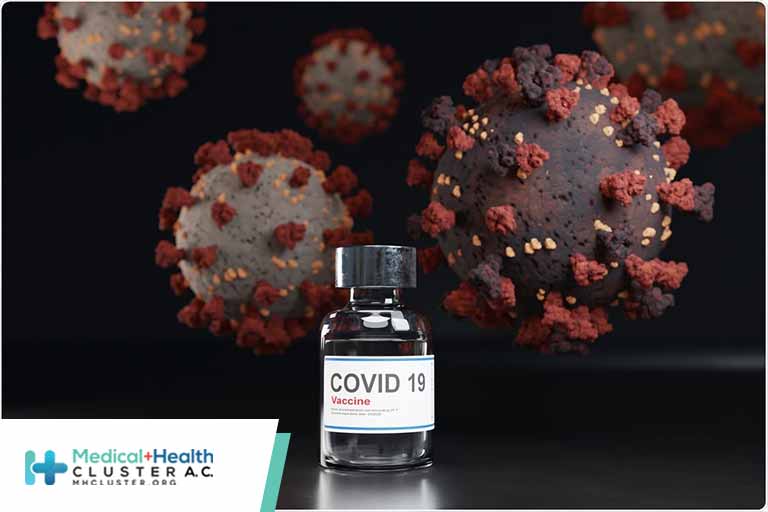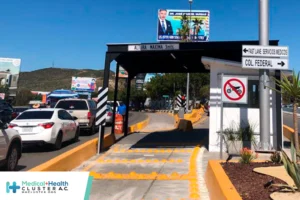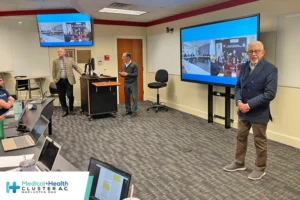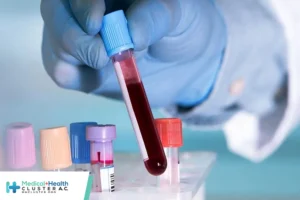En atención a la creciente preocupación sobre la confianza en...
Leer más
BNT162b2 vaccination induces durable SARS-CoV-2 specific T cells with a stem cell memory phenotype

Vaccination against SARS-CoV-2 is effective in preventing hospitalization from severe COVID-19. However, multiple reports of break-through infections and of waning antibody titers have raised concerns on the durability of the vaccine, and current vaccination strategies now propose administration of a third dose. Here, we monitored T cell responses to the Spike protein of SARS-CoV-2 in 71 healthy donors vaccinated with two doses of the Pfizer–BioNTech mRNA vaccine (BNT162b2) for up to 6 months after vaccination. We found that vaccination induced the development of a sustained anti-viral CD4+ and CD8+ T cell response. These cells appeared before the development of high antibody titers, displayed markers of immunological maturity and stem cell memory, survived the physiological contraction of the immune response and persisted for at least 6 months. Collectively, these data show that vaccination with BNT162b2 elicits an immunologically competent and long-lived SARS-CoV-2-specific T cell population.
INTRODUCTION
Approximately half of the world population has developed some immunity to SARS-CoV-2, either through natural infection or through vaccination (1) but it is unclear if this immunity will last longterm. SARS-CoV-2 infection elicits a robust immune response (2–10), as do mRNA vaccines (11–18), inducing both B and T cell responses. Effective humoral immunity involves the generation of high affinity neutralizing antibodies, which are widely used as indicators of protective immunity (19–21) and represent the final output of a coordinated cellular response. The emergence of activated T cells precedes recovery from COVID-19 (7, 22–24), providing evidence of T cell involvement in the immune response to SARS-CoV-2. Initial in vitro studies characterized patient-derived antigen-specific CD4+ and CD8+ lymphocytes reactive with overlapping peptide pools from the SARS-CoV-2 Spike protein (3, 5, 23, 25), showing the establishment of an effective anti-viral response after natural infection. Spike-specific T cells persist in COVID-19 convalescents (2, 26–28), arise following vaccination with mRNA-based SARS-CoV-2 vaccines, and include specialized subsets which can both sustain cytotoxic functions and participate to the maturation of antibody-producing B cells in lymph node germinal centers (11, 15–17, 29, 30). Notably, subjects with undetectable or impaired humoral responses can recover from COVID-19 (31–33), underlining the importance of cellular immunity in clearing SARS-CoV-2 infection.
Mass-vaccination against COVID-19 is effective and protects against severe COVID-19 in real-world settings (34, 35). Decreases of antibody levels and increases of breakthrough infections point to waning immunity of vaccination over time (36–39). However, despite the decline in antibody levels, protection from severe disease and hospitalization remains high (40, 41), suggesting that persisting cellular immunity drives the immune response and prevents viral dissemination when antibodies disappear. Studies on immune memory to other coronaviruses have shown that cellular immunity can be detected for up to 17 years after initial infection in the absence of antibodies (9, 40–42), with cellular immunity persists for up to 15 months after SARS-CoV-2 infection (43). The study of the cellular immune components induced by vaccination and the assessment of their persistence is fundamental; in this respect, a recent study has shown that robust adaptive immune responses can be detected for up to 6 months following mRNA vaccination (15).
Here, we performed a longitudinal study looking at the T cell responses and Anti-Receptor-Binding Domain (RBD) antibodies in 71 health-care workers and scientists vaccinated with the BNT162b2 vaccine following the European Medicines Agency (EMA)-approved two-dose vaccination schedule, up to 6 months after the first dose. We investigated expression of phenotypic markers associated with the differentiation, polarization, and cytotoxic functions of Spike-specific T cells, and monitored the evolution of the adaptive immune response induced by mRNA vaccination. Vaccination induced the generation of immunologically competent Spike-specific T cells, including potentially long-lived memory stem cells, pilasters of durable immunity. This information provides further information on the durability of the vaccine, which may inform vaccination strategies going forward.
RESULTS
Induction and persistence of anti-RBD antibodies
The antibody response to vaccination with BNT162b2 was measured in serum samples obtained at baseline (T0), on the day of the boost (T1), 14 days later (T2), and 6 months after the first dose (T3). All individuals in our cohort were devoid of anti-RBD antibodies at baseline, and significant levels appeared in 100% of individuals only after the second dose (Fig. S1A), (T1: median 28; T2: median 1786; T3: median 517). Age and sex are key variables in immunity induced by vaccination, whose effectiveness decreases with age and is usually lower in males (44). In our cohort antibody levels induced by BNT162b2 were comparable between males and females (Fig. S1B), similar to other studies (45). Also, we found that antibody titers negatively correlated with age at all time points, confirming previous results (45–47) (Fig. S1C). Thus, the data show that BNT162b2 induces the production of anti-RBD antibodies which decrease over time but are maintained at high levels for at least 6 months.
Induction and durability of the Spike-specific T cell responseTo investigate the cellular immune response induced by vaccination, we exposed freshly obtained peripheral blood mononuclear cells (PBMC) to peptide pools spanning the entire sequence of the Spike (S) protein. Blood collection was performed at the same timepoints as outlined above. To fully capture the antigen-specific T cell response and to maximize sensitivity, two separate assays for the detection of the expression of surface Activation-Induced Markers (AIM) and for Intracellular Cytokine Staining (ICS) were set up (Fig. S2 for gating strategy). All assays were performed on freshly isolated PBMCs in order to obtain accurate absolute cell counts.AIM+ CD4+ T cells were defined by up-regulation of CD40L and CD69 (48), while CD137 and CD69 expression identified the AIM+ CD8+ subset (5) (Fig. 1A). After paired background subtraction from parallel unstimulated cultures, and having set a threshold for positivity at 0.008% for CD4+ T cells and 0,079% for CD8 T cells (see Methods section for further details), we found that 97% of donors had detectable numbers of AIM+ CD4+ cells at baseline (T0, Fig. 1B, 1C and Fig. S3A). 21 days after the first dose of vaccine these cells were expanded 6-fold compared to baseline (T1), and further still at 14 days after the boost (T2). Six months after the first dose (T3) AIM+ CD4+ cell numbers were still 5-fold higher compared to baseline and were detected in all donors. AIM+ CD8+ T lymphocytes were present at baseline in only 18% of the donors (Fig. 1B, 1C and Fig. S3A). Following vaccination, 87% showed Spike-specific CD8+ T cells which had expanded 11-fold from baseline; following further expansion after the second dose, these cells remained detectable after 6 months in 88% of donors (Fig. 1B, 1C and Fig. S3A). The total magnitude of the T cell response (including both CD4+ and CD8+ cells) increased significantly following priming (T1) and rechallenge (T2), but decreased 6 months after the first dose (T3) (Fig. 1D and S3B). The Stimulation Index (S.I., the ratio of AIM+ T cells in stimulated over unstimulated samples) was used to determine T cell activation (49), and the cut-off for positive responses was arbitrarily set at 3. The S.I. of AIM+ CD4+ cells increased dramatically after the first dose, remained at high levels after boosting, and decreased after 6 months, remaining more than 5-fold higher compared to baseline (Fig. 1E). The SI of AIM+ CD8+ T cells peaked 14 days after the boost, and declined by 1/3 at the latest time-point (Fig. 1E). Notably, over 70% of individuals in our cohort showed AIM+ CD4+ cells with S.I. >3 already at baseline, and this proportion increased to 100% 6 months after receiving the first dose (Fig. 1F). On the other hand, only 7% of individuals showed AIM+ CD8+ with SI>3 cells at baseline, with this fraction increasing to 60% and 75% after priming and boosting, and then decreasing to 63% at the latest time points (Fig. 1F). The frequency of S-specific CD4+ (and not CD8+) T cells induced by vaccination inversely correlated with age only at T1, although a tendency toward reduced numbers of activated T cells with increasing age was observed at all time points (Fig. S3C), again with no significant differences between males and females (Fig. S3D).
Cytokine production by S-specific T cells
Créditos: Comité científico Covid




